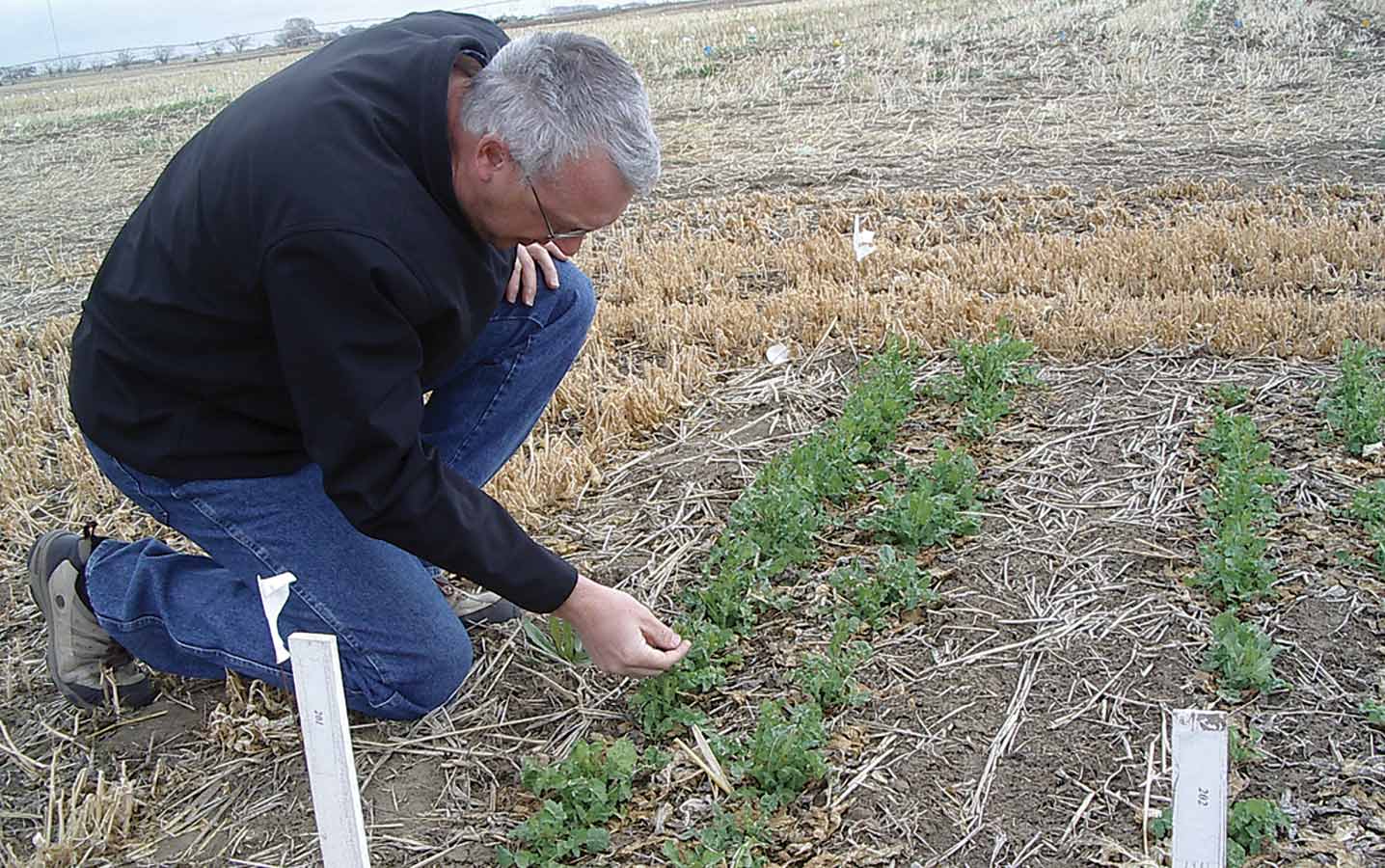Feasibility of growing winter types of Brassica rapa in Alberta
Key practice: Growers in southern Alberta may want to consider winter B. rapa as a suitable alternative to hybrid spring canola (B. napus), which could be a good fit with other winter crops grown there, especially winter wheat.
Project title, Lead researcher: “Evaluation of winter Brassica rapa for cultivation in Alberta,” 2007-11, Habibur Rahman, University of Alberta, Murray Hartman and Ross McKenzie, Alberta Agriculture and Rural Development, and Kevin Falk, Agriculture and Agri-Food Canada
Grower organization funder: ACPC
This study shows that the milder region of southern Alberta could be suitable for production of winter B. rapa, and that winter B. rapa could be a good fit with other winter crops grown in the area, especially winter wheat.
Habibur Rahman, University of Alberta, in collaboration with Murray Hartman and Ross McKenzie, Alberta Agriculture and Rural Development, and Kevin Falk, Agriculture and Agri-Food Canada (AAFC), led a four-year study to learn the feasibility of growing winter B. rapa in Alberta.
In 2007, Rahman’s team collected B. rapa lines from Europe and China and evaluated them for two years (2007-08 and 2008-09) in field trials in Beaverlodge, Edmonton, Lacombe and Lethbridge. Then for another two years (2009-10 and 2010-11) only in Lethbridge. Rahman also generated F1 hybrids by crossing European and Chinese types and evalu-
ating them in Lethbridge in 2010-11.
The crop was seeded in August and winter survival was evaluated the following spring. Winter B. rapa survived the Canadian winter for three of the four years tested in Lethbridge, where winter is generally milder compared to the other locations.
Crops seeded and grown under retained stubble showed significantly better survival compared to those grown in bare soil under tillage conditions. Among the two winter B. rapa gene pools, the European type showed greater winter hardiness compared to the Chinese type.
Rahman’s team also experimented with growing the winter B. rapa plants in pots under outdoor conditions in the northern city of Edmonton. All plants were winter-killed by January, when the air temperature reached -15°C or below. In this experiment, the European and Chinese winter B. rapa and their F1 hybrids were used, and seeded in August.
Conclusions
Results obtained from this study show promise for the cultivation of winter B. rapa in the southern region of Alberta. Further research will be needed for genetic improvement of winter survival. Agronomic research will need to identify the factors affecting winter survival and yield, such as seeding date, seeding rate, stubble height, location temperature and climate, and soil temperature.
The benefits of introducing winter B. rapa as an alternative crop in southern Alberta include earlier maturity and greater shatter resistance compared to spring B. napus, however a major increase in winter hardiness is required for successful production, as well as disease resistance. The results of this study show there is potential for B. rapa to be introduced in southern Alberta, but more work is required to ensure success.





